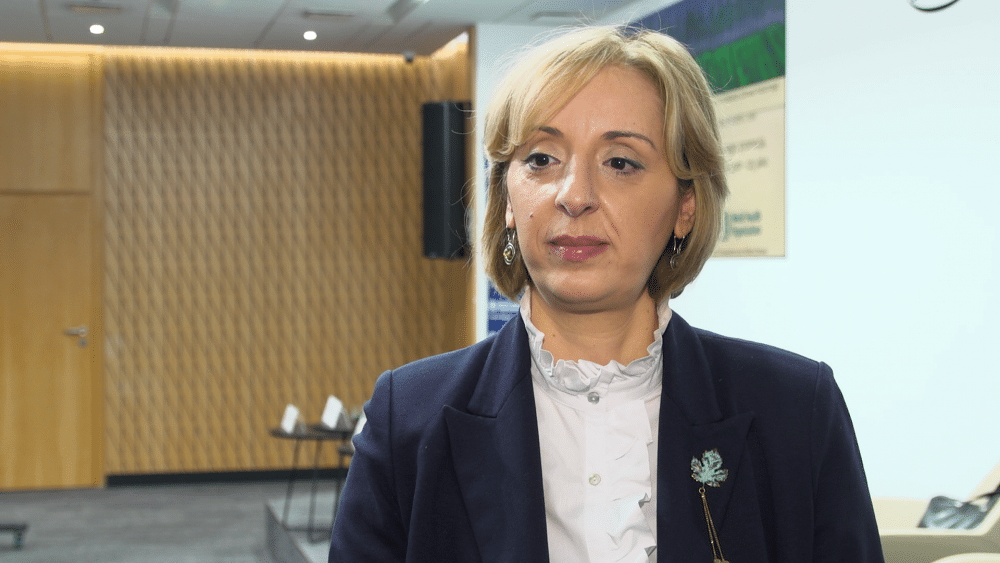Nearly 60% of patients in Poland who needed mental health support did not seek help, fearing stigmatization. For every 100,000 citizens, there are only nine psychiatrists, and the average waiting time for a visit is 117 days. “We recommend incorporating mental health services into primary healthcare, where the most common mental health problems can be successfully treated,” emphasized Nino Berdzuli from WHO.
“Mental health is a significant challenge for our society, for everyone in Europe. We recently noticed an increase in the occurrence of mental disorders and pressure on the mental health care system, especially after the COVID-19 pandemic,” says Nino Berdzuli, Director of the World Health Organization’s Office in Poland, Special Commissioner for Refugee Affairs in Ukraine in host countries to Newseria Business agency.
According to UN data, depression affects 280 million people worldwide. Even before the outbreak of the pandemic, statistics concerning mental health problems were dramatic, and lockdowns, social isolation, and stress related to the epidemiological situation only worsened them.
As the Headway report “A new roadmap in Mental Health” indicates, the incidence of conditions such as anxiety disorders and severe depressive disorders increased during the pandemic by over 25%. This trend is also exacerbated by the ongoing war in Ukraine, economic recession, geopolitical crises, and advancing climate change. Experts estimate that by 2030, mental disorders will account for over half of the global economic burden due to non-communicable diseases. As the report describes, the increase in cases of anxiety disorders and depression during the pandemic was partly due to patients not being able to access mental health services (19% of respondents indicated this). To effectively treat those in need, more emphasis must be placed on the capabilities of healthcare systems.
“WHO has issued recommendations and guidelines towards improving the regulation of mental health care and improving mental health services for society. One of the WHO’s recommendations is to create an integrated model of mental health care, in which primary healthcare centers play a very important role in these services,” the expert points out.
According to WHO, incorporating mental health services into primary healthcare is one of the most effective ways to reduce unmet needs in mental health – through the early identification of those at risk, conducting rapid assessments, and facilitating referrals. This is also the goal of the mental health gap action programme (mhGAP), launched in October in cooperation with the Institute of Psychiatry and Neurology and the Ministry of Health. The program enables primary care physicians to acquire knowledge and skills in recognizing symptoms of common mental health disorders, such as depression, stress, addictions, and suicidal thoughts. The pilot program is initially planned for the Podlaskie and Mazowieckie provinces, with the intention of expanding it to other provinces.
As WHO reports, mhGAP has already been implemented in over 100 countries, and Poland is the latest European region country to do so. However, the scale of needs here is significantly larger. For example, Poland allocates 3.7% of its health sector budget to mental health care, less than other European countries. Per 100,000 inhabitants, there are only nine psychiatrists, which significantly extends the waiting time for specialist help. The average waiting time at NFZ (National Health Fund) facilities is 117 days. Additionally, nearly 60% of patients in Poland who reported needing mental health support didn’t seek help due to stigmatization.
“WHO closely cooperates with the Institute of Psychiatry and Neurology and the Ministry of Health to incorporate these services into primary healthcare. The aim is for general practitioners to meet the unmet needs of the population in the field of mental health, neurology, and psychosocial support,” Nino Berdzuli emphasizes. “We also recommend creating a transparent referral mechanism from primary healthcare facilities to community clinics, specialized mental health clinics, and third-level care.”
The Ministry of Health has been building a new model of psychiatric care based on the community model, i.e., providing health services close to residents’ homes, for five years. These pioneering mental health centers shift the burden of institutional care to those provided in the local community and at home. This helps reduce the number of hospitalizations, and patients receive help faster, without referral, and close to home. This includes visits to the clinic, day or 24-hour ward stays, or support from a community treatment team.
“Due to the increase in mental disorders, we see that the mental health services system is overloaded, we see pressure on the mental health care system in the entire WHO European region. That’s why it is so important to ensure greater accessibility of these services for the community, including mental health services in primary healthcare,” the WHO representative assures.
Work is also underway to reform child and adult psychiatry simultaneously. The new model was introduced in August 2019. WHO points out that children in Poland have one of the lowest mental wellbeing indicators, but one of the highest attempted suicide rates in Europe. Their number increased by 148% in 2022 compared to 2020.
